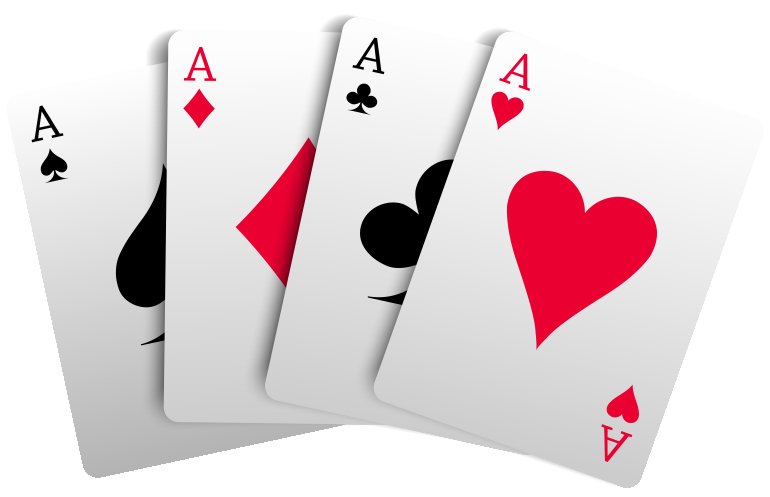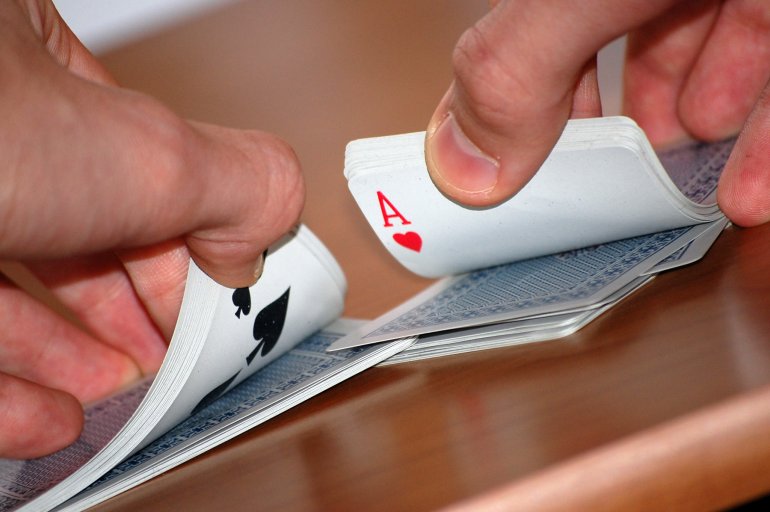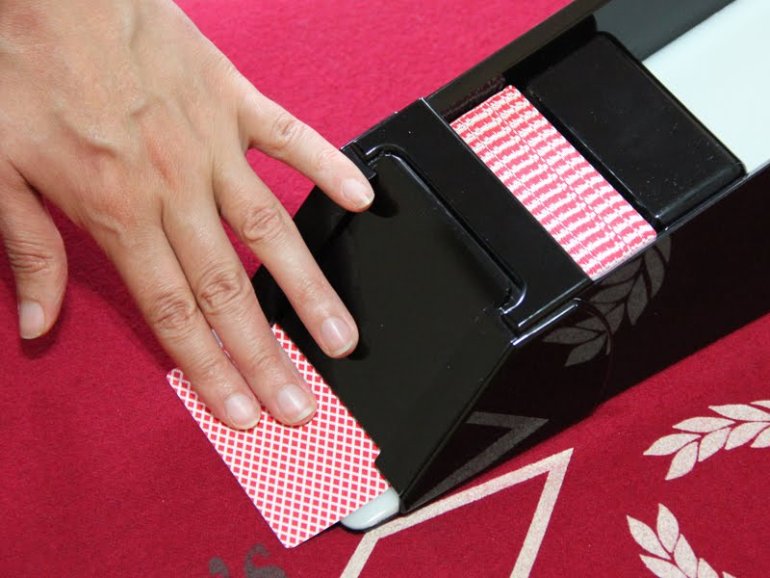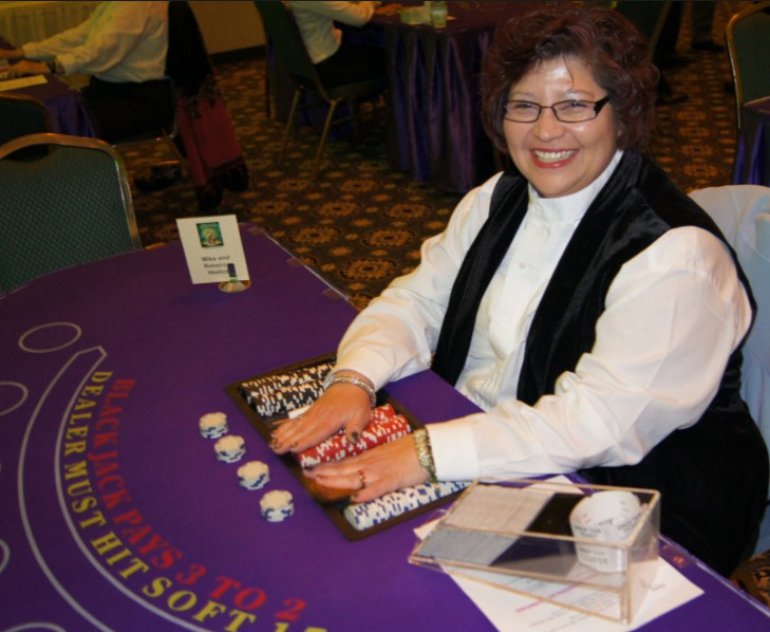_770.jpg)
Imagine sitting at a blackjack table, watching the cards as they’re dealt, and realizing you can predict when an ace is likely to show up. Sounds like something out of a casino heist movie, right? But this is no Hollywood trick—it’s a real strategy called ace tracking, and it’s one of the most fascinating techniques skilled blackjack players use to tilt the odds in their favor.
At its core, ace tracking is about keeping an eye on where the aces are in the deck.
Unlike traditional card counting, which tracks all the cards, this technique zooms in on the most valuable ones. Why? Because aces can make or break your hand, giving you a shot at a blackjack or boosting your total to a strong 20 or 21.
This isn’t some magic skill—it’s a combination of observation, memory, and a bit of luck. In this article on Casinoz, we’ll explain what ace tracking is, how it works, and whether it’s a strategy worth trying.
Understanding the Ace Tracking Basics
To appreciate how ace tracking works, it helps to understand why aces are such a big deal in blackjack. These little cards can transform an ordinary hand into a winning one. Pair an ace with a 10 or a face card, and you’ve got blackjack—the best hand in the game, paying out 3:2 at most tables. Even without a blackjack, an ace gives you flexibility by acting as either a 1 or an 11, making it a powerhouse card for building strong hands.
Now, here’s where it gets interesting: in a typical game, the cards aren’t truly random. When dealers shuffle, especially manually, they often leave clumps of cards together. This is where ace tracking comes into play. By paying attention to where aces land during the shuffle, you can predict when they’re likely to reappear in the deck.
But this isn’t just about spotting aces—it’s about understanding the flow of the game. Shuffling methods, deck structures, and the way cards are dealt all create patterns that an observant player can exploit. It’s a game of wits, requiring sharp focus and a good memory, but for those who master it, the potential rewards are worth the effort.

Mechanics of Ace Tracking
Ace tracking is all about turning chaos into opportunity. At first glance, the shuffle may seem random, but for a keen observer, it holds valuable patterns. Let’s break down how the process works, step by step.
1. Pre-Shuffle Observation
The first step in ace tracking happens during the deal. Players watch the cards closely as they are played out in the round. The goal here is to identify "clumps" or groups of cards that contain an ace.
For example, if you notice an ace dealt alongside a 2 and an 8 in one hand, that’s a clump to remember. As these cards are collected and stacked at the end of the round, they will often stay close together during the shuffle.
2. Shuffle Tracking
Once the cards are collected, the dealer shuffles the deck. Despite appearances, shuffling isn’t always perfect. Manual shuffles, especially in casinos with multiple decks, can leave sections of cards relatively intact.
To track these clumps through the shuffle:
- Watch the Break Points: Notice where the dealer cuts or splits the deck during the shuffle.
- Follow the Movement: Visualize how the clumps of cards might move as they are shuffled back into the deck.
- Estimate the Position: After the shuffle, try to approximate where in the deck the clump containing the ace has landed.
This step is challenging and requires practice to master. Some players use mental visualization techniques, while others might develop a rhythm to predict where the clumps will end up.
3. Post-Shuffle Prediction
Once the shuffle is complete and the cards are ready for the next round, it’s time to make your move. Based on your tracking, you’ll have a rough idea of when an ace is likely to appear. This knowledge lets you adjust your betting strategy accordingly:
- Raise Your Bet: Increase your wager when you believe an ace is about to be dealt.
- Optimize Your Play: Make strategic decisions, such as standing or splitting, based on the likelihood of receiving an ace.
4. Recognizing Clump Behavior
It’s worth noting that aces don’t always behave predictably. Factors such as the dealer’s shuffling technique or the introduction of automatic shufflers can disrupt clump formations. However, in games with hand-shuffled decks, clumps are often preserved enough to give ace tracking a fighting chance.
5. Combining Observation with Memory
Ace tracking relies heavily on your ability to remember specific card groupings and predict their positions. To improve your accuracy:
- Practice watching and tracking shuffles with a deck of cards at home.
- Focus on visualizing clumps rather than individual cards to simplify the process.
- Develop a system to mentally "tag" aces and their neighbors during gameplay.
By mastering these mechanics, you can turn ace tracking from an intimidating skill into a powerful advantage at the blackjack table. Of course, success depends not just on knowing the steps but also on putting them into practice, refining your technique, and staying sharp during the game.

Practical Execution
Now that you understand how ace tracking works, let’s dive into the practical side of using it during a game of blackjack. This section will walk you through how to apply the technique step-by-step, along with tips to improve your accuracy and decision-making.
1. Spotting Aces During the Deal
The foundation of ace tracking is recognizing the aces and their clumps as they are dealt. Here’s how you can do it:
- Focus on Key Cards: Keep a close eye on the cards as they’re dealt, particularly the aces and their immediate neighbors. These neighbors form the clump you’ll follow through the shuffle.
- Stay Subtle: Be discreet in your observations. Staring too intently at the table could draw unwanted attention from the dealer or pit bosses.
2. Tracking Through the Shuffle
Once the cards are collected for shuffling, it’s time to follow the clumps:
- Watch the Process: Pay attention to how the dealer shuffles the deck. Are they using simple hand shuffling, riffle shuffling, or a combination?
- Observe the Cut: The cut often determines where the clump will end up in the final deck order. If the dealer allows you to cut the cards, use this opportunity to position the clump favorably for yourself.
- Estimate Placement: Based on the shuffle pattern, estimate where the ace clump might be. It might take practice, but over time, you’ll improve your ability to track the clump’s movement.
3. Adjusting Your Bets
With an estimated location for the clump, you can adjust your bets strategically:
- Increase Bets When Clumps Approach: As the clump nears the top of the deck, raise your bet to take advantage of the likely appearance of an ace.
- Stay Conservative Elsewhere: When you’re uncertain about the clump’s location, stick to smaller bets to minimize your risk.
4. Strategic Gameplay
Ace tracking isn’t just about betting—it also influences how you play your hand:
- Splitting Aces: If you’ve successfully tracked an ace and received another, splitting can maximize your winnings.
- Doubling Down: When an ace is likely, consider doubling down if your hand totals 9, 10, or 11.
- Avoid Risky Moves: On the flip side, if you’re confident an ace won’t appear in the current round, play more conservatively.
5. Staying Sharp Under Pressure
Ace tracking demands focus and quick thinking, especially in a live casino setting. Here are a few ways to stay sharp:
- Practice Visualization: Train your mind to visualize card clumps moving through a shuffle. Practice at home with a deck of cards to improve your accuracy.
- Manage Distractions: Casinos are designed to overwhelm your senses. Stay focused on the game and avoid letting noise or flashing lights break your concentration.
- Adapt to the Dealer: Each dealer has unique habits, such as shuffling speed or style. Adjust your tracking approach to match their behavior.
6. Combining Ace Tracking with Other Strategies
For maximum impact, ace tracking can be paired with other advantage play techniques:
- Card Counting: Use card counting to estimate when the deck is rich in 10-value cards. This complements ace tracking by increasing your chances of hitting a blackjack.
- Betting Progressions: Combine ace tracking with progressive betting strategies to capitalize on high-confidence situations.
By following these steps and refining your technique, you’ll be able to use ace tracking effectively at the blackjack table.

Challenges and Limitations
Ace tracking can be a powerful strategy, but it’s far from foolproof. Several obstacles can hinder its effectiveness, from technical difficulties to the watchful eyes of casino staff. Understanding these challenges is essential if you want to make the most of this advanced technique.
1. The Skill Barrier
Ace tracking isn’t easy. It requires:
- Sharp Observation Skills: You must closely monitor cards during the deal and shuffle without drawing attention.
- Strong Memory: Keeping track of clumps, especially in multi-deck games, can overwhelm even seasoned players.
- Quick Calculations: In fast-paced games, there’s little time to analyze the shuffle or plan your next move.
How to Overcome It: Regular practice is the key. Use a deck of cards at home to simulate shuffles, refine your tracking, and test your memory under timed conditions.
2. Casino Countermeasures
Casinos are well aware of ace tracking and employ several methods to neutralize it:
- Automatic Shuffling Machines: These machines randomize the deck to a degree that makes tracking virtually impossible.
- Frequent Shuffling: Some dealers shuffle more often, breaking up clumps before they can be exploited.
- Changing Dealers: Rotating dealers with different shuffling styles can throw off a player’s tracking rhythm.
How to Overcome It: Seek tables where manual shuffling is still common, especially in smaller casinos or specific blackjack variants.
3. Risk of Detection
While ace tracking isn’t illegal, casinos frown upon any advantage play techniques. If you’re caught, you might face:
- Ejection from the Casino: Casinos can ask you to leave if they suspect you’re using ace tracking.
- Inclusion on a Blacklist: Some casinos share information about advantage players, which can limit where you’re allowed to play.
How to Overcome It: Be discreet. Avoid obvious behavior like staring at the shuffle too intently or drastically changing your bets in predictable patterns.
4. Inconsistent Shuffling Styles
Not all dealers shuffle the same way. Some are more thorough, while others may unintentionally preserve clumps. Inconsistent shuffling can make it harder to track aces reliably.
How to Overcome It: Observe the dealer’s habits before jumping into a game. Look for patterns in how they shuffle and whether clumps seem to persist.
5. Multi-Deck Complications
Many blackjack tables use multiple decks, which can dilute the impact of ace tracking. With more cards in play, clumps become harder to identify and track.
How to Overcome It: Focus on single-deck or double-deck games whenever possible. These games are less common but provide better opportunities for ace tracking.
6. Randomization by Players
In some games, other players may disrupt your tracking efforts by cutting the deck unpredictably or influencing shuffle outcomes. How to Overcome It: Sit in a position where you can minimize these disruptions, such as directly to the dealer’s left.
While ace tracking offers significant potential, it’s not a guaranteed win. The combination of skill, patience, and adaptability is what sets successful trackers apart.

Ace Tracking at Online Casinos: Is It Possible?
With the rise of online gambling, many players wonder whether ace tracking can be used effectively in online casino games, particularly live dealer blackjack. While the digital format introduces unique challenges, there are some possibilities to consider.
Online Blackjack with RNG
In most online blackjack games, a Random Number Generator (RNG) determines card outcomes, and the deck is reshuffled after each hand. This makes ace tracking impossible because:
- There’s no physical deck to observe.
- The virtual shuffle completely randomizes the cards after every round.
If you’re playing standard online blackjack, ace tracking simply won’t work.
Live Dealer Blackjack
Live dealer blackjack games offer a more traditional casino experience, as the cards are dealt by real dealers using physical decks. However, ace tracking in this setting is still extremely challenging for several reasons:
- Limited Camera Angles: The shuffle and deal are broadcast via overhead cameras, but you can’t observe the cards in detail. Tracking clumps is nearly impossible without a clear view of the shuffle.
- Dealer Practices: Many live dealer casinos use automatic or continuous shuffling machines to randomize the deck, making clumps of cards irrelevant.
- Multiple Decks: Live dealer games often use multiple decks, which dilutes the impact of ace tracking.
- Quick Play Pace: The fast pace of online live dealer games leaves little time for tracking or analysis.
Casinos’ Countermeasures
Even in live dealer settings, online casinos are aware of advanced strategies like ace tracking. To mitigate any potential edge, they employ:
- Frequent Deck Changes: Dealers often switch decks during the session, disrupting clumps.
- Continuous Shuffling Machines: These machines make tracking impossible by randomizing cards continuously.
Are There Any Opportunities?
While ace tracking is nearly impossible in most online environments, there might be rare opportunities in specific scenarios:
- Manual Shuffling: If you find a live dealer game where the shuffle is manual and visible, there’s a slim chance of attempting ace tracking. This is rare, as most casinos opt for automatic solutions.
- Small Casino Sites: Less regulated or smaller live dealer setups might not use sophisticated shuffling methods, but these are exceptions rather than the norm.
Practical Advice
If you’re interested in advantage play techniques, focus on strategies better suited to online casinos, such as:
- Basic Strategy: Mastering optimal play decisions for each hand.
- Bonuses and Promotions: Using online casino bonuses to reduce the house edge.
- Card Counting: In rare live dealer games where decks are not reshuffled after every hand, card counting might offer an edge.
While ace tracking is a powerful tool in brick-and-mortar casinos, it’s nearly impossible to implement effectively in online settings, especially with RNG games and modern live dealer setups. The digital environment prioritizes fairness and eliminates tracking opportunities through constant randomization and advanced technology.
For online players, mastering traditional strategies and understanding the nuances of the virtual blackjack landscape will yield better results than relying on ace tracking.
Ethical and Legal Considerations
Ace tracking sits in a gray area of gambling ethics. It’s not outright cheating—it doesn’t involve tampering with cards, using hidden devices, or colluding with casino staff—but it still involves gaining an advantage through skill and observation. Let’s unpack the ethical and legal aspects of this technique.
Is Ace Tracking Legal?
In most jurisdictions, ace tracking is perfectly legal. Unlike card marking or using electronic devices, ace tracking relies entirely on your ability to observe and remember the flow of cards. However, legality doesn’t always mean acceptance.
Casinos have the right to refuse service to anyone, and many view ace tracking as a form of advantage play they’d prefer to eliminate. If caught, you might be asked to leave the table, banned from the casino, or even added to a watchlist shared among other casinos.
The Ethical Debate
Some argue that ace tracking is simply a matter of skill and falls within the spirit of the game. After all, blackjack is one of the few casino games where strategy and decision-making can influence the outcome.
Others, particularly casinos, view it as exploiting imperfections in the game, which they see as unfair. Casinos design their games to have a house edge, and techniques like ace tracking work to erode that advantage.
The Casino’s Perspective
Casinos invest heavily in measures to protect their profits, from hiring skilled dealers to using automatic shufflers. From their perspective, ace tracking undermines the fairness of the game by giving the player an unintended edge.
Staying Under the Radar
If you choose to use ace tracking, discretion is key. Here’s how to avoid raising suspicion:
- Vary Your Bets: Don’t dramatically increase your wager only when an ace is due. Use a more subtle progression to avoid attention.
- Blend in with Other Players: Don’t behave differently from casual gamblers. Engage in light conversation or pretend to make decisions based on instinct.
- Know When to Walk Away: If you feel you’re being watched or suspect the casino has caught on, it’s better to leave than to risk being banned.
Responsible Gaming
While ace tracking can tilt the odds in your favor, it’s important to approach the game responsibly. Remember that blackjack, like all casino games, is still gambling. There’s no guarantee of success, and you should never bet more than you can afford to lose.
Ace tracking is both an art and a science. For many players, it’s a way to bring skill into a game often dominated by chance. Whether it’s ethical or not depends largely on your perspective, but one thing is certain: in the world of blackjack, knowledge is power.
Should You Use Ace Tracking?
Ace tracking is a fascinating and highly skilled technique that showcases the intersection of observation, memory, and strategy in the game of blackjack. By tracking clumps of cards—particularly aces—through the shuffle, players can gain a significant edge over the casino.
If you’re an experienced blackjack player looking to push the limits of your skills, ace tracking can be an exciting challenge. However, it’s not a beginner-friendly strategy—it demands patience, precision, and the willingness to accept risks, both in terms of detection and the inherent unpredictability of the game.
For those willing to invest the time and effort, ace tracking offers more than just a chance to beat the odds. It’s a way to turn blackjack into a game of skill, where observation and intellect take center stage.
In the end, ace tracking isn’t just about winning money—it’s about mastering the art of advantage play. Whether you’re a professional player or a curious enthusiast, this technique provides a unique opportunity to see blackjack from a new perspective.
So, the next time you sit at the table, take a closer look at those cards. With the right skills and a bit of luck, you just might turn the game in your favor.


























